How much food should you eat at a time?
We easily “eat through” the moment of satiety, and the frantic pace of life pours in calories that we are often ashamed of.
Nutritionists recommend a literal “hand-held” method to determine how much food should be on our plates.
MyFitnessPal, a calorie-counting service based on USDA recommendations, recently posted a simple guide that helps you figure out the necessary portion sizes for each food group, compare your usual portions to the recommended portions, and “reprogram” your brain for the right size portions.
Learning how to estimate a portion visually will help you establish a relationship with food and make it easier to control your weight.
Portion size is the amount of food from a particular group that you eat at one meal.
The classic measure is a standard 250 ml cup.
1. Cereals, cereals, pasta: 1 cup.
These are buckwheat, oatmeal, millet, and other cereals, rice, quinoa, wheat, or rice pasta. One cup fits in the palm of an adult’s hand as a bulk pile. You can also imagine the size of a tennis ball
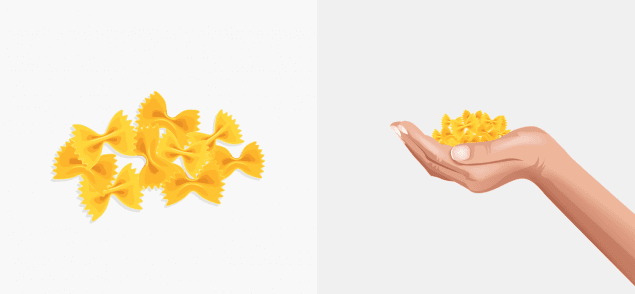
2. Granola: ¼ cup.
Granola is recommended as a topping for mashed fruit or unsweetened yogurt, mixed with unsweetened cereal, and as a stand-alone dish.
A quarter cup is a size that barely covers the center of an adult’s palm.
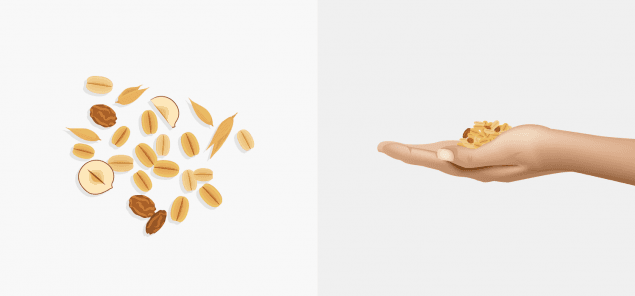
3. Nuts and dried fruit: ¼ cup or 40 g
The recommended dose for nuts and dried fruit is ¼ cup or 40 g.
As with granola, the portion should cover the center of the palm of an adult’s hand and be used as an addition to oatmeal and salads, less often as a healthy snack on its own.
Avoid dried fruit and candied fruits soaked in sugar or sugar syrup – they are not part of the recommendation.
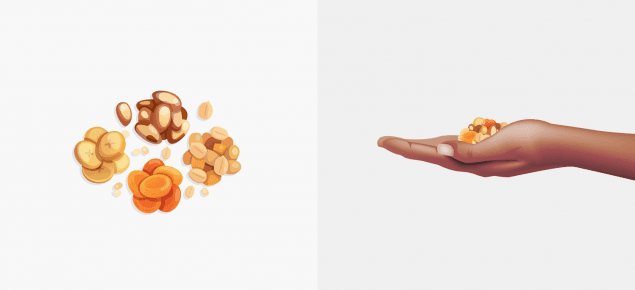
4. Fresh fruit: 5 servings.
The size of an average serving of fruit is similar to the size of your fist.
It is recommended to eat up to 3-5 servings per day (i.e. 3-5 apples / 2 cups of berries, an apple, a banana/grapes, 4 kiwis, and a grapefruit).
Preferably, it should be 3-4 different fruits per day.

5. Leafy greens: 2-3 cups or 2 handfuls
The minimum serving of fresh salad per day is 1 cup.
But this is exactly the situation when nutritionists boldly recommend doubling or tripling the portion without fear of consequences.
The 2-cup size is what 2 adult hands can take at 1 time.
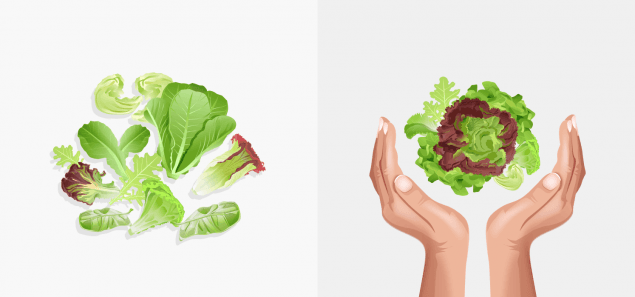
6. Non-starchy vegetables: 1 cup or a full handful
These include cucumber, tomato, cauliflower, broccoli, onions, asparagus, peppers, mushrooms. One cup of chopped non-starchy vegetables corresponds to one bulk handful of an adult.
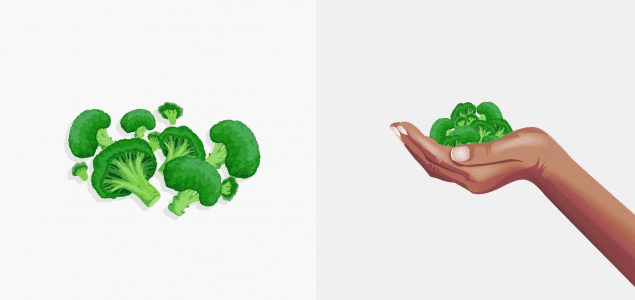
7. Starchy vegetables: 1 partial cup.
Starchy vegetables include potatoes, corn, pumpkins, beets and other root vegetables, parsnips, zucchini and zucchini, and peas.
A portion of these vegetables, when cooked, would fit in the palm of an adult’s hand.
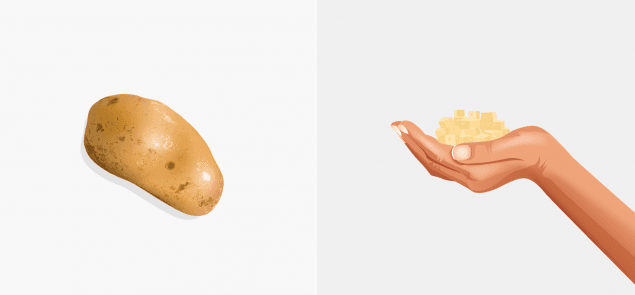
8. Meat, poultry, and fish: 100 g or 1 palm
The size of the recommended 100g piece is the size of your palm or a deck of playing cards.
Focus and preference on lean – chicken or turkey fillets, fish, boiled veal, and seafood.
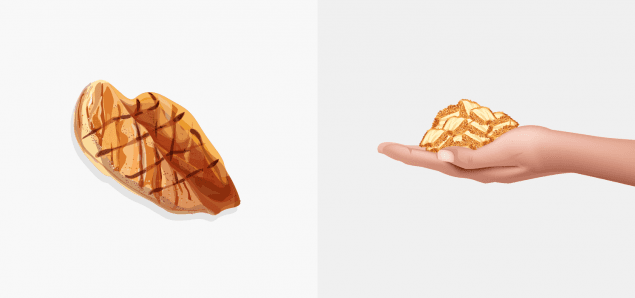
9. Cheese: 45 g or index finger
Despite the good nutritional composition, the recommended portion for cheese is small because of the high caloric content of the product – it should be limited to a piece the size of an index finger.
It can be added to salads and oatmeal or eaten as a snack.
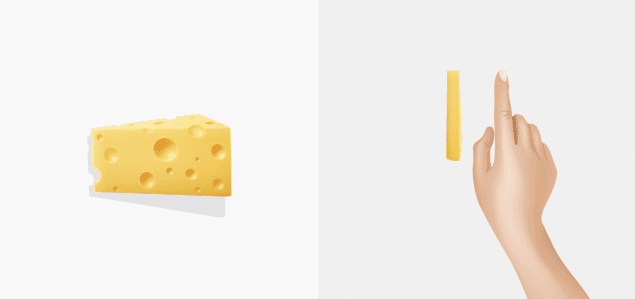
10. Milk products: 1 cup or the size of a fist.
A serving of milk, yogurt, or kefir is one cup or the size of an average fist. When choosing dairy products, look at their fat content, as it affects calories and the correct serving size.

The portion size is for a medium-sized adult with moderate but regular physical activity. The tips below will help you adjust your diet to your workout volume:
- If you exercise 2 to 3 hours per week – no adjustment necessary, the daily allowance remains unchanged;
- 4-6 hrs/week – increase your intake of quality carbohydrates, proteins and unsaturated fats by 5-10%;
- 7-8 hrs/week – increase protein intake (fish, poultry, meat, eggs, tofu or legumes) and whole-grain cereals by 10-15%, and fruit from 3-5 to 5-7 servings per day;
- 9-10 h/week – consult a nutritionist or at least a trainer.

Daily nutritional intake for a woman
Because of her smaller muscle mass, a woman’s metabolism is slower, which means that her calorie needs are about 15% lower.
She requires less energy, less protein, fats, and carbohydrates.
However, if you pay attention to vitamins, the situation is quite different: for example, women require more iron, vitamin C, which is due to the natural processes going on in her body.
Also, the female body is more sensitive to irregular meals.
Here are a few rules of a healthy and balanced diet for women:
The first results will not belong in coming.
- Eat less, but more often.
The optimal option in many cases is to eat six meals a day.
Only the portions should be small – no more than 250 grams.
This way we protect the stomach from being stretched, at the same time beating the feeling of hunger. - Water is what is important.
Be sure to drink about 1.5 liters of pure, non-carbonated water every day. - Don’t overeat before bedtime.
It is worth moving dinner time so that it is about 3 hours away from bedtime.
Of course, it is better to give preference to light products.
Nutritionists give separate recommendations for “overnight” foods: for example, white chicken meat, milk, oatmeal, almonds, celery, apples, mushrooms.
- Eat less, but more often.
The optimal option in many cases is to eat six meals a day.
Only the portions should be small – no more than 250 grams.
This way we protect the stomach from being stretched, at the same time beating the feeling of hunger. - Water is what is important.
Be sure to drink about 1.5 liters of pure, non-carbonated water every day. - Don’t overeat before bedtime.
It is worth moving dinner time so that it is about 3 hours away from bedtime.
Of course, it is better to give preference to light products.
Nutritionists give separate recommendations for “overnight” foods: for example, white chicken meat, milk, oatmeal, almonds, celery, apples, mushrooms.
This is significant.
Eating a hearty breakfast isn’t a crime at all.
Recent studies have firmly established a reputation for regular, high-calorie breakfasts as a weight-loss aid - Fruits and vegetables are our friends.
I recommend them to be consumed in an amount not less than 400 grams daily (excluding starchy root vegetables, such as potatoes). - Sugar and salt are our enemies.
The normal intake of free sugars is about 50 g per day (about 12 teaspoons)
But be careful – sugar contains sugars in sugary drinks, various food products, as well as honey and even fruit juices.
For salt consumption, only 5 g (1 teaspoon) is considered the norm. - Calories love counting.
There are many formulas for calculating individual daily calorie needs depending on weight, height, age and physical activity.
It characterizes the average woman by an average of 1,800-2,000 calories per day. - The three pillars of a healthy diet.
Amino acids (animal proteins – milk, meat, eggs), unsaturated omega-3 fatty acids (sea fish, flaxseed oil, spinach), long carbohydrates (rice, buckwheat, legumes, oat flakes). - Calculate the GDF – the balance of proteins, fats, and carbohydrates.
Protein should account for 12%, fat for 30-33%, and carbohydrates for 55-59% of daily calories.
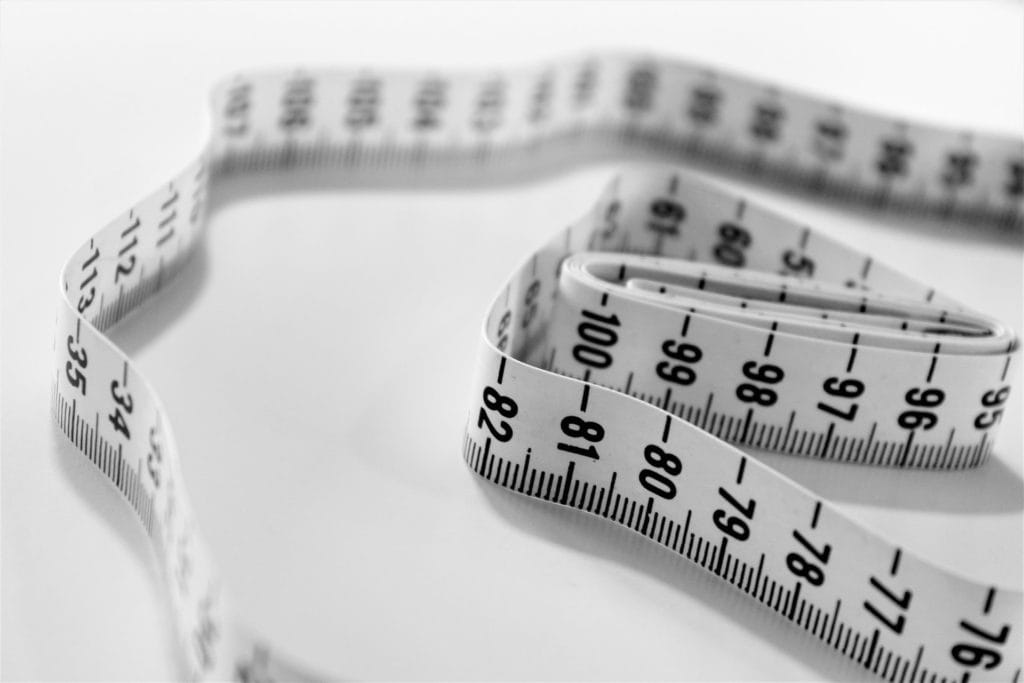
Dietary supplement – weight loss
What is Cacao Bliss?
Cacao Bliss is a dietary supplement designed to cater to those seeking effective weight loss solutions. Known for its rich flavor and health benefits, this supplement harnesses the power of cacao, a superfood loaded with antioxidants and essential nutrients. By integrating Cacao Bliss into your daily regimen, you can indulge your taste buds while supporting your weight management goals.
The Benefits of Cacao Bliss
This unique product not only aids in weight loss but also promotes overall health. Cacao is renowned for its mood-boosting properties, which can help curb cravings and promote a healthier relationship with food. The high antioxidant content in Cacao Bliss protects the body from free radicals, while the addition of essential nutrients helps sustain energy levels throughout the day.
How to Use Cacao Bliss for Weight Loss
To get the most out of Cacao Bliss, consider incorporating it into your daily routine. Whether you mix it into morning smoothies, oatmeal, or simply enjoy it as a warm beverage, the possibilities are endless. The key to successful weight management with Cacao Bliss lies in maintaining a balanced diet and exercise regimen. Consistency is crucial, and with its enjoyable taste, sticking to your plans becomes much easier.
This superfood is so incredibly healthy and rejuvenating to every cell in your body, I recommend eating it everyday… not just to reward yourself with a delicious treat, but to provide your body with nutrients to support your healthy lifestyle. *
And here’s the best part…
You can mix into a hot drink on its own or use it to add a sweet, chocolatey kick to smoothies or desserts – all while helping to support your health and focus.*



